By Caroline Wolcott, Lena Dufresne, Anna Walters, and Graham Robbins
Contaminated baby formula, water contaminated by sewage, and unsafe swimming conditions are frightening realities in China. These issues span over numerous aspects of everyday life including people’s eating habits, health, and lifestyle. A large percentage of this contamination can be attributed to many years of uncontrolled industrial pollution, seeing as though industry is a large majority of the Chinese economy.
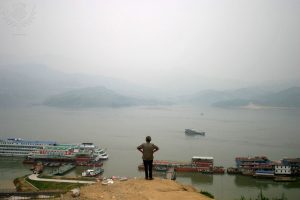 A woman overlooks the polluted Yangtze River. Courtesy: Getty Images
A woman overlooks the polluted Yangtze River. Courtesy: Getty Images
Effects on Eating Habits
Chinese culture seems to revolve around food. It brings people together and makes every meal a special occasion. In the last 15 years, this tradition has been met with increasing caution due to the effects of water pollution.
The Ministry of Health of the People’s Republic of China reported that more than 80% of China’s north-eastern wells contain water that is “unfit for human consumption of any type.” It was also reported that 90% of the groundwater in Chinese cities is polluted. This caused major concerns about where to find clean drinking water. As the author of Food Safety News says, “No one I know drinks tap water.” Even very poor Chinese citizens drink bottled water, although 60% of bottled water was found to be ‘fake’ and filled with tap water.
Eating out has become very risky because harmful additives have also become quite common in China’s food industry. Restaurants and street vendors began to sell ‘false beef’, created with the additive ‘beef extract’ which is both poisonous and cancerous. Even fruits and vegetables are subjected to these poisonous additives, in order to make them grow faster and larger. Throw it Out The Window, a Chinese food safety survey, listed the numerous contaminated foods they have come across, including melamine-laced baby formula, clenbuterol-laced ham, ‘fake’ beef, and waste oil.

Because of this, produce is often grown using contaminated water and is not fit for human consumption. Wealthier citizens pay an inflated price for organic fruits and vegetables, but it is not guaranteed that these items are grown without additives. Many farmers do not know the meaning of ‘organic’ and the Chinese government admits that approximately 30% of food with this label does not pass basic pollutant and chemical tests.
Effects on Health
Water pollution in China has been around for many years. However, recent studies have begun to show the long-term effects of pollutants on people’s health.
One study talks of how China’s water pollution continues to grow because of the lack of restraint on waste material dumping. Businesses are allowing their factories to dump their sewage and waste directly into bodies of water that people use for their drinking water. This causes many types of illnesses and disease that will affect people’s health as they consume this contaminated water. Beach explains that, “Untreated sewage contains large numbers of pathogenic micro-organisms such as schistosomial ova, cercaria, and ova of parasitic flukes and worms.” These pathogens are hazardous to human health and a system needs to be put in place to treat the sewage.
Zhuang also discovered in his recent study on the Huai River Basin that some pollutants can lead to digestive cancer over time. He states, “Water pollution not only affects the environment that people live in, but also has a serious adverse impact on their health, particularly through its role in promoting the occurrence and development of digestive cancers.” The fact that this pollution is causing cancer should be an intense indicator that change needs to occur. Studies have found an increase in digestive cancer in the Huai River Basin in areas that were seriously polluted. In order for China to protect their citizen’s health, they need to enforce their regulations on water pollution and cut back on their pollutants. This will greatly decrease not only their environmental impact, but their impact on their own citizen’s health. Marilyn Beach jokes that one of her Chinese colleagues says, “This lake is an example of how healthy our environment is.” However, as she says that her eyes were only drawn to the factory on the river edge that was dumping a steady stream of unpolluted material into the lake.
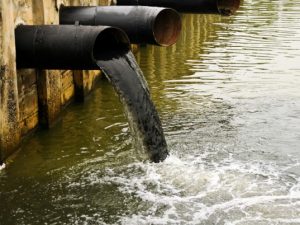
Effects on Lifestyle
Water pollution in China has affected more than just farmland. It has caused people to restrain themselves from going into it. According to an article in the New York Times, “more than 80 percent of the water from underground wells used by farms, factories and households across the heavily populated plains of China is unfit for drinking or bathing because of contamination from industry and farming.” This entirely prevents citizens of China from entering the water.
Because of the lack of interest in going in the water in China, businesses such as diving and wake boarding have seen a significant drop in business. There is also a big surfing market in China that has also taken a hit in terms of profit. Hainan is an island that prides itself on its waves because they are ideal for learning to surf. They also have a more advanced part of the island for better surfers. How is a business like this supposed to stay open when the water quality has only gotten increasingly worse each year?
Dabo Guan, a professor at the University of East Anglia that primarily studies water pollution, was quoted saying, “From my point of view, this shows how water is the biggest environmental issue in China.” With water becoming this unsafe for human use, someone has to wonder how it got to this point. Pollution at this scale stems from humans and how we treat the environment. In the book The Yellow River, the writer states that, “everywhere there are human beings. In this old land one can scarcely find a spot unmodified by man and his activities.” It is unfortunate that human error has caused the water quality to prevent us from participating in water activities that bring so many people joy.
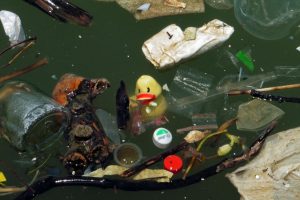
Solutions
China is one of the most populous countries in the world and it produces a lot of energy to support its population. Most of the energy produced comes from the use of coal-powered plants, which in turn produces a great amount of pollution. This pollution, along with poor sanitization methods and trash from people, affect water quality across the country. The Chinese government started a project to help combat these effects. It was not an approach to clean the affected ecosystems, but rather to produce more clean energy. The solution was to build the world’s largest hydroelectric dam.
The Three Gorges Dam (TGD) was a massive undertaking that took 17 years to complete. Opened in 2003, it stands 60 stories high and spans 2 kilometers across the Yangtze River. It is made up of 3 powerhouses and 32 generators. The powerhouses cost $50 million each and each generator produces enough energy to equal a small nuclear power plant. The scale of this dam is impressive and the amount of energy produced is as well. The TGD was built for aiding in the reduction of pollution, but it also reduces the destruction of the yearly flooding of the Yangtze.
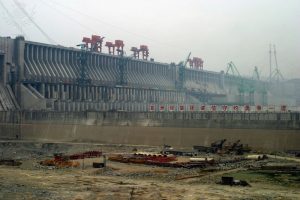
There is debate on whether the benefits of the TGD outweigh the disadvantages. Jim Yardley states his concern in his New York Times article: “Many environmentalists contend that electricity generated by large dams should not be considered renewable because of the social and environmental damage that follow many projects.” The dam does help reduce pollution from power plants, but it also causes other damages socially and environmentally. The social impacts come from the dam displacing 1.13 million people from their homes. It has destroyed farmland, homes, and ancient temples in its wake. The environmental concerns stem from the fact that the dam restricts flood waters. These flood waters carry silt with important resources for nourishing the soil. This silt is building up behind the dam and causing problems, but sluice gates have been installed to slowly allow it to pass through the dam. Overall, the Three Gorges Dam is a step in the right direction for producing clean energy and solving water pollution problems in China.
Bibliography
BBC. “China Pollution: Over 80% of Rural Water in North-East ’unDrinkable’.” BBC China (BBC News), April 12, 2016. http://www.bbc.com/news/world-asia-china-36022538.
Beach, Marilyn. 2001. “Water, pollution, and public health in China.” Lancet 358, no. 9283: 735. Academic Search Premier, EBSCOhost (accessed October 12, 2016).
Buckley, Chris and Vanessa Piao. “Rural Water, Not City Smog, May Be China’s Pollution Nightmare.” Asia Pacific (The New York Times), April 12, 2016. http://www.nytimes.com/2016/04/12/world/asia/china-underground-water-pollution.html?_r=1.
Discovery World HD. “The Three Gorges Dam: World’s Largest Hydroelectric Dam | Big Bigger Biggest Documentary.” YouTube. July 23, 2015. Posted October 12, 2016. https://www.youtube.com/watch?v=j-wjDXYKgH4.
Heng, Wu. “掷出窗外:面对食品安全危机,你应有的态度.” April 22, 2012. Accessed October 12, 2016. http://www.zccw.info/.
Pietz, David A. “Creating a Garden on the North China Plain.” In The Yellow River: The problem of water in modern China, by David A. Pietz, 194–258. Cambridge, MA: Harvard University Press, 2015.
Warriner, Keith. “China’s Food Safety Issues Worse Than You Thought.” July 11, 2014. Accessed October 12, 2016. http://www.foodsafetynews.com/2014/07/chinas-food-safety-issues-are-worse-than-you-thought/#.V_sUjNArJp8.
Yang, Gonghuan, and Dafang Zhuang. Atlas of the Huai River Basin Water Environment: Digestive Cancer Mortality. Dordrecht, Netherlands: Springer, 2014.
Yardley, Jim. “Chinese Dam Projects Criticized for Their Human Cost.” The New York Times. November 19, 2007. Accessed October 12, 2016. https://www.internationalrivers.org/resources/chinese-dam-projects-criticized-for-their-human-cost-2978.
Image Bibliography
Chen, James. Water Pollution China. June 3, 2016. Public. Flickr. https://www.flickr.com/photos/142364389@N04/27361095251/in/photolist-iYNJ3j-7cZW4U-HFNLnz-5yY9ri-pDRTu-9StFyw-81nXJg-9StnXS-f7syDu-9SqrXX-4ULBrG-81nTXZ-9SqwRM-9SqETr-9Stqjf-jTKn88-9Sqsxn-9StCRd-9Styhw-4jyHpx-NudBh-p2sPQo-NudTj-9xngTL-J5mudD
Chris. Bao’an Marina Water Pollution Shenzhen China. June 5, 2016. China 2016. Flickr. https://www.flickr.com/photos/dcmaster/27616247405/in/photolist-iYNJ3j-7cZW4U-HFNLnz-5yY9ri-pDRTu-9StFyw-81nXJg-9StnXS-f7syDu-9SqrXX-4ULBrG-81nTXZ-9SqwRM-9SqETr-9Stqjf-jTKn88-9Sqsxn-9StCRd-9Styhw-4jyHpx-NudBh-p2sPQo-NudTj-9xngTL-J5mudD
Photographer. Officers Destroy Contaminated KFC Products. May 25, 2016. http://quest.eb.com/search/115_2677186/1/115_2677186/cite
Three Gorges Dam. June 8, 2003. http://quest.eb.com.libproxy.furman.edu/search/three-gorges-dam/1/115_2688998/Three-Gorges-Dam.
Three Gorges Dam. June 8, 2003. http://quest.eb.com.libproxy.furman.edu/search/three-gorges-dam/1/115_2686685/Three-Gorges-Dam.
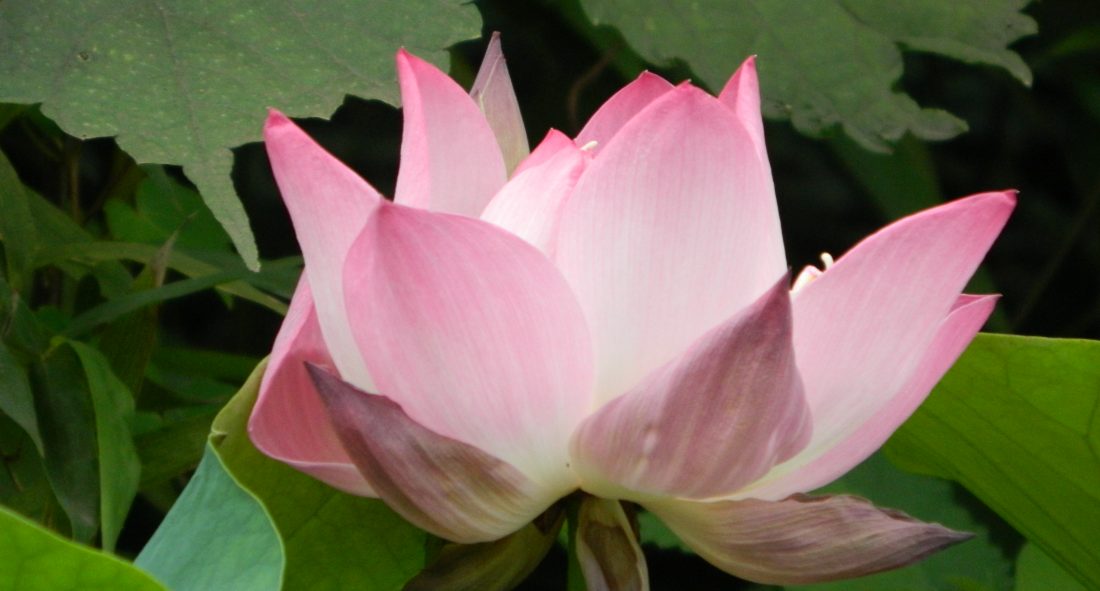
This blog is very interesting and informative! However, as a Chinese student, I have to say that the situation might get better right now. I am not very sure, but the pictures can be taken long time ago (from people’dressing I guess). Thus I do think that it very be better to use some photos which have a contrast between the modernity of Chinese society and the severity of Chinese environment issue.
Your blog is extremely interesting and it is really easy to keep my attention while reading due to all the titles and pictures, which is great! All the hyperlinks are good at keeping the posts short but also keeping people’s attentions. The posts have a lot of really good information in them, and I really like that you included a section for solutions on how to fix the problem of water solution in China. I also found an article that I thought you guys might want to check out: http://www.greenpeace.org/eastasia/campaigns/toxics/problems/water-pollution/
This blog entry is extremely informative and well-organized. I like that you included links and went into detail of how water supply is affecting the Chinese population. Not only did you include the issues but you also concluded this entry with solutions, which ties the whole blog entry together. This included a lot of text but the pictures balanced it out well and since there was a lot of information, it is appropriate. I enjoyed reading this blog entry and learned something new that I didn’t know before.
Also, for information on how to improve or take steps to improve the pollution, check out this link:
http://www.nature.com/news/public-health-a-sustainable-plan-for-china-s-drinking-water-1.15619
I really like the title of y’alls blog post since tea is important in China. Your hyperlinks are also very nice and helpful for someone who wants to know more on the topic. The images that you have selected are very powerful and help to enhance your argument. In your section on Eating Habits, maybe you could include information from Ang’s book where she discusses the food safety challenges. It would give you more of a personal experience rather than just news reports. I also liked how you didn’t just focus on the negative, but also included the positive efforts China is taking to make the environment better. Overall, I really enjoyed reading and looking at your post and now never want to eat or drink in China haha!!
That’s a good idea to link to the section in Ang’s book. I found this blog post very useful during that class session, when we were discussing the book. They definitely relate and linking to it as an example would be helpful.